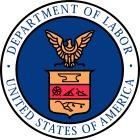 This post continues our two-part series discussing the Department of Labor’s (DOL’s) recent guidance on state retirement initiatives. The first part of this series, “The Proposed Rule—State-Sponsored IRAs,” discusses the DOL’s proposed rule that would create an ERISA “safe harbor” for state-sponsored IRAs. In Part II, we discuss the DOL’s Interpretive Bulletin (Interpretive Bulletin), which addresses other types of state retirement initiatives for workers in the private sector.
This post continues our two-part series discussing the Department of Labor’s (DOL’s) recent guidance on state retirement initiatives. The first part of this series, “The Proposed Rule—State-Sponsored IRAs,” discusses the DOL’s proposed rule that would create an ERISA “safe harbor” for state-sponsored IRAs. In Part II, we discuss the DOL’s Interpretive Bulletin (Interpretive Bulletin), which addresses other types of state retirement initiatives for workers in the private sector.
The Interpretive Bulletin sets out, in a summary format, the DOL’s views on state-offered 401(k) plans for private sector employees and other state initiatives. Beginning with the DOL’s strong support for ERISA-covered plans (for reasons including the availability of employer contributions, higher contribution limits, and the protection of ERISA accounts from creditors), the Interpretive Bulletin surveys a range of current and potential state-sponsored programs and offers the DOL’s views on how ERISA coverage may apply to each of these initiatives.
The Interpretive Bulletin reviews programs in
-
Washington State, where the state’s proposed retirement program is not considered to be an ERISA-covered plan, but instead by design establishes a marketplace for the offering of ERISA plans and IRAs;
-
the Commonwealth of Massachusetts, where a state law allowing nonprofit organizations to adopt a contributory retirement plan developed and administered by the state is shown as an example of how states may set up their own 401(k) prototype plans for private employers to adopt; and
-
the State of Maryland, where a Governor’s Task Force report considered the possibility of the state establishing and obtaining IRS tax qualification for a state multiple-employer plan (MEP).
The DOL closes by providing its views on ERISA preemption, including the view that the types of programs outlined in the Interpretive Bulletin would not be preempted by ERISA because they do not “undermine ERISA’s exclusive regulation of ERISA-covered plans” and that they “contemplate a state acting as a participant in a market rather than as a regulator.”
Several issues addressed in the Interpretive Bulletin are giving rise to debate, including the DOL’s view that a state’s unique “representational interest in the health and welfare of its citizens” allows a state to sponsor an MEP for in-state employers. What is new here is that the DOL is providing states a different standard for the establishment of an MEP than the “employment based nexus” standard that the DOL established for private enterprises that wish to do the same. This issue is critical because MEPs can have streamlined regulatory reporting and disclosure requirements, allowing them to provide competitive cost savings to adopting employers. Another issue to watch is the DOL’s query (included as a footnote in the bulletin) on whether state sovereign immunity laws need to be reviewed in light of ERISA’s remedial provisions.
While the DOL’s Interpretive Bulletin became effective on November 18, 2015, the impact of the Interpretive Bulletin and the proposed rules on IRAs are worth keeping an eye on. We recognize that change is often the rule and not the exception, but how these state-sponsored programs will play out has yet to be determined. A significant impact to the retirement industry could be on the horizon.
In addition to this DOL guidance package discussed in this series, there is also talk of possible legislative proposals, and the Treasury Department recently announced the federal myRA program as a voluntary national initiative.
© 2015 by Morgan, Lewis & Bockius LLP. All Rights Reserved.
